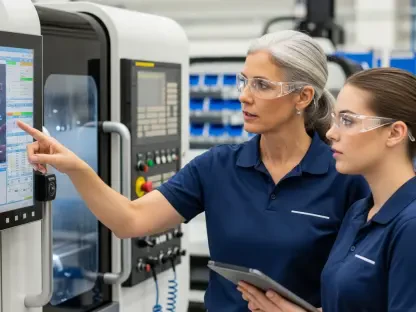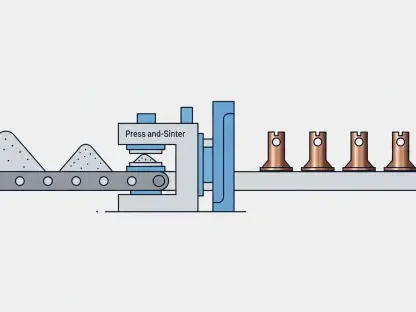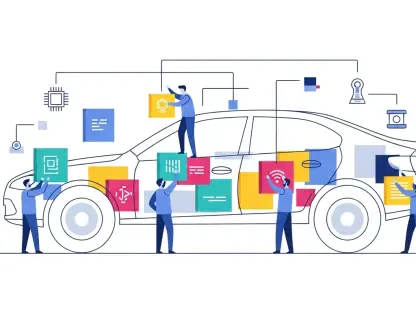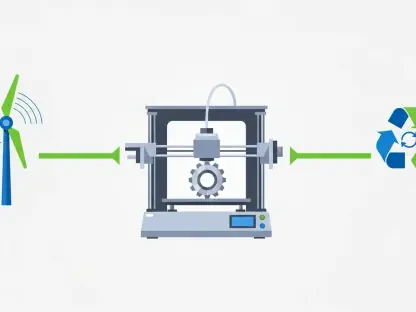In the rapidly evolving world of production logistics, the role of Automated Guided Vehicles (AGVs) is increasingly prominent and pivotal. These autonomous workhorses are essential for optimizing material flow and ensuring uninterrupted production lines. However, traditional charging methods have proven to be a stumbling block, imposing significant downtime and operational inefficiencies. A recent study conducted by MHP, a Porsche Company, in collaboration with PohlCon, has highlighted the transformative potential of inductive wireless charging for AGVs. This study, centered on process-integrated charging systems like those from Wiferion, aimed to validate the productivity benefits of such technology over conventional separate charging zones. The findings were nothing short of remarkable, demonstrating a 50% increase in AGV productivity, reduced fleet size, and several other operational advantages.
Efficiency Gains Through Wireless Charging
As production logistics become more automated, maximizing AGV efficiency is not just recommended; it is imperative. Traditional charging zones not only lead to considerable downtime but also constrain the overall productivity of AGV fleets. These charging zones necessitate that AGVs be taken offline to recharge, thus halting their critical material handling activities. In contrast, integrating inductive charging points directly into production processes eliminates these inefficiencies by enabling AGVs to charge during their routine operations. This process-integrated approach ensures that AGVs remain operational for longer periods, translating into more consistent and reliable production workflows.
The study conducted by MHP and PohlCon involved comparing traditional charging strategies with inductive point charging systems. The results indicated a pivotal shift: in-process charging not only increased AGV productivity by a substantial 50% but also allowed for a 30% reduction in the fleet size required to maintain constant throughput levels. These efficiency gains underscore a significant improvement in resource utilization. By replacing separate charging zones with in-process charging stations, companies can ensure that their AGVs are always ready to perform, thus driving higher productivity and operational efficiency.
Productivity and Cost Benefits
The transition to inductive wireless charging comes with pronounced productivity and cost benefits. Traditional charging zones are typically designed as designated areas where AGVs must go to recharge periodically. This setup involves planned downtime, affecting the overall productivity of the logistics operation. However, the study found that with process-integrated inductive charging, downtime is minimized or even eliminated. AGVs can recharge while they are on the move or during other routine operations, ensuring that their activity remains as uninterrupted as possible.
Implementing inductive point charging systems brings several cost advantages. The 50% increase in AGV productivity translates into fewer units being needed to meet production demands. This reduced reliance on a larger fleet can decrease capital expenditures and maintenance costs, as fewer AGVs need fewer replacements and less frequent servicing. Additionally, the streamlined operational flow reduces the time and energy expended on frequent charging stops. The result is a leaner, more cost-effective logistics operation that significantly benefits the bottom line.
Space Utilization
Space utilization is another critical aspect improved by inductive wireless charging systems. Traditional charging zones occupy substantial floor space within production facilities, often at the expense of valuable operational or storage areas. According to the study, integrating inductive charging points directly within the production process can free up these occupied zones, allowing companies to repurpose them for other critical functions. In a typical scenario, about 30 square meters of space previously blocked by charging areas could now be reclaimed and used more productively, perhaps for worker stations or additional storage capabilities.
Freed-up space can mean the difference between building an entirely new storage facility or expanding an existing one. For instance, companies might use this reclaimed space to construct a high-bay warehouse, dramatically increasing storage capacities and operational efficiency. By eliminating traditional charging zones and embracing in-process charging, companies can maximize their floor space, further contributing to overall operational improvements.
Reduction of Downtime
One of the most compelling advantages of inductive wireless charging is the significant reduction in AGV downtime. Traditional charging practices result in frequent and extended charging breaks, during which AGVs are not operational. The study revealed that adopting an in-process charging strategy could eliminate over 5,000 hours of downtime each year. This reduction ensures that AGVs remain in service for longer periods, increasing overall productivity and meeting production targets more efficiently.
Additionally, the new charging strategy minimizes unnecessary vehicle travel. With traditional charging zones, AGVs may traverse long distances to reach their designated charging areas, leading to wasted travel and time. The study highlighted that integrating wireless charging could cut vehicle travel by approximately 1,300 kilometers annually. This reduction not only saves time but also minimizes wear and tear on the AGVs, extending their operational lifespan. Furthermore, the reduction in travel distance avoids around 10,900 cross-contacts between employees and vehicles, which significantly enhances workplace safety.
Economic and Operational Impact
The integration of wireless charging technology brings immediate productivity gains and cost reductions. It optimizes resource use, reduces unnecessary traffic within production environments, and improves safety by minimizing cross-contact incidents. The economic impact is substantial, as the reduction in fleet size and increased operational efficiency directly translate to savings on capital and operational expenditures. Implementing inductive charging systems means less frequent downtime, ensuring a smoother and more efficient production process.
On an operational level, companies experience less disruption as AGVs are continually at work, charging as they go. The enhanced reliability of AGVs, without the constant need to return to a charging zone, means that production delays are significantly minimized. This seamless integration into the production process allows for a more fluid and uninterrupted workflow, contributing to overall productivity increases. As a result, companies can achieve their performance and output targets more consistently.
Conclusion
Switching to inductive wireless charging offers significant productivity and cost advantages. Normally, AGVs (Automated Guided Vehicles) have designated charging zones where they need to recharge periodically, leading to planned downtime and reduced overall productivity in logistics operations. However, a recent study shows that using process-integrated inductive charging can minimize or even eliminate this downtime. Inductive charging allows AGVs to recharge as they move or during other routine tasks, keeping their activity as continuous as possible.
Implementing inductive point charging systems also provides various cost benefits. A 50% boost in AGV productivity means fewer units are required to meet production needs. Relying on fewer AGVs cuts capital expenditures and lowers maintenance costs since fewer units require less frequent servicing and replacements. Furthermore, this streamlined operation reduces the time and energy spent on frequent charging stops, resulting in a leaner and more cost-efficient logistics operation. The outcome is a more cost-effective, efficient system that greatly enhances the bottom line.









